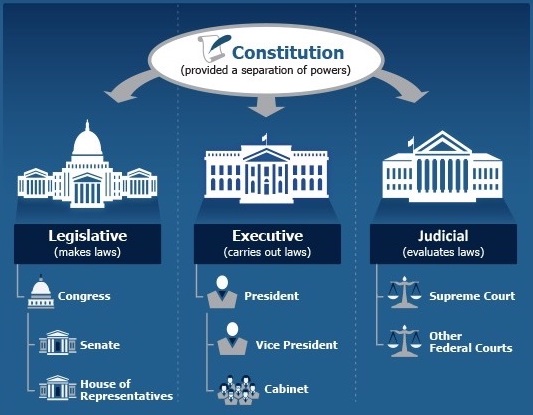U.S. Government
All 50 states are represented within the U.S. government, a three-pronged system of checks and balances.
The United States “government was conceived by colonizers who believed they had the right to representation in their government”—meaning that if they were expected to obey laws and pay taxes, they deserved to participate in the process of government. As a result, each one of the 50 states elects a number of district representatives (determined by population) who participate in law-making on behalf of their constituents. Each serves for a term of two years and are re-elected (or not) based on how well they’ve done their job. Each state is also represented by two senators. Together, the Senate and the House of Representatives make up the legislative branch of government.
The U.S. Constitution divides the federal government into three branches to ensure that no individual or group will have too much power:
Legislative
Proposes and makes laws
Executive
Carries out laws (the president/vice president and their advisors, most federal agencies)
Judicial
Evaluates laws (Supreme Court and other courts) Each branch of government can change acts of the other branches, a hallmark of the system known as “checks and balances.”

Retrieved from: https://www.usa.gov/
Other Resources
The White House Google Virtual Tour
Thanks to Google, you can explore the White House and even walk around The Oval Office.



